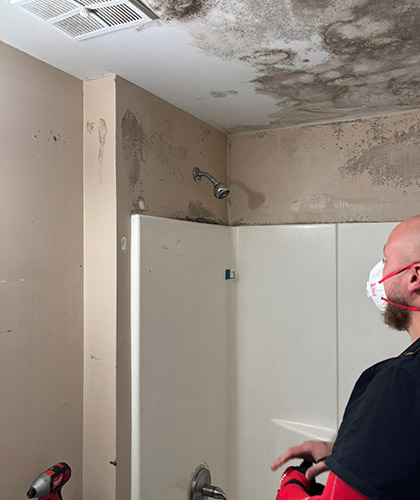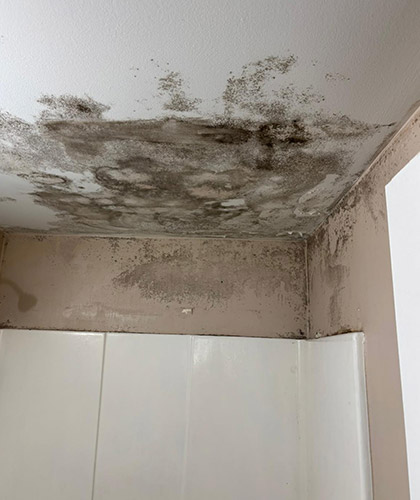Mold on Bathroom Ceiling: Remediation Tips
Bathroom ceiling mold doesn't announce itself with loud alarms. It grows slowly, fed by hidden leaks, trapped humidity, and overlooked maintenance. Your very first sign may be a stain on the ceiling, a musty smell after a shower, or a patch of fuzz you almost overlook. By the time recognizable patches of mold appear on the ceiling, your home's air quality may already be compromised - and with it, your family's health.
Without being able to clean mildew off the ceiling - or understanding the difference between black mold and mildew in the shower - your family may be exposed to airborne spores that can make them sick.
Learning more about this problem will help you to keep your family safe.
What Causes Mold on Bathroom Ceiling?
Every hot shower sends steam rising to the ceiling, soaking the air. Every unseen leak seeps moisture into the walls, feeding what you can't yet see. Mold grows where there is moisture that sticks around for a while.
Excess Moisture or Poor Humidity Control
Moisture left hanging in the air after showers and baths doesn't just disappear - it soaks into walls and ceilings. Over time, this creates a perfect breeding ground for mildew on the bathroom ceiling.
Poor Ventilation
When damp air has nowhere to escape, it turns every surface into mold's breeding ground. A broken exhaust fan, a clogged vent, or bathroom windows that stay shut too often all create the perfect trap - sealing in the moisture that mold needs to grow and thrive.
Ceiling Leak
Time and neglect turn a small drip into a ceiling leak - and a ceiling leak into a breeding ground for mildew and black mold. What starts as a trickle can end up threatening your walls, your air, and your health.
Poor Maintenance of the Bathroom
When regular bathroom cleaning is skipped, early warnings are easy to miss - water stains, musty smells, even a small fuzzy patch tucked into a corner. Left unnoticed, these small signs give mold the foothold it needs to spread fast across walls, ceilings, and hidden spaces.
Old Materials and Equipment
Even the best materials break down. Cracks form, seals loosen, paint peels, and tiny gaps open between tiles and walls - trapping moisture and giving mold on the bathroom ceiling the perfect start.
Identifying Bathroom Ceiling Mold
Mold hides behind smells, stains, and small signs you might overlook - until the damage spreads wider than you expected. Here's what to watch for:
- Musty Smells: If the air feels heavy and smells damp after a shower, trust your nose. Even without visible mold on the bathroom ceiling, a musty smell means spores are already at work somewhere nearby.
- Water Stains: Brown or yellow stains creeping across the ceiling are more than cosmetic. They signal trapped moisture - and trapped moisture is an open invitation for mold to grow. Pay attention after heavy rains or long periods of high humidity.
- Peeling Paint: When paint starts bubbling, cracking, or peeling from the ceiling, it's not just old age. Moisture trapped behind the surface often hides mold, waiting for a chance to break through.
Common Locations for Mold on Bathroom Ceiling:
- Bathroom corners
- Exhaust fan frames
- Ceiling areas above showers
- Wet insulation above bathroom ceilings

